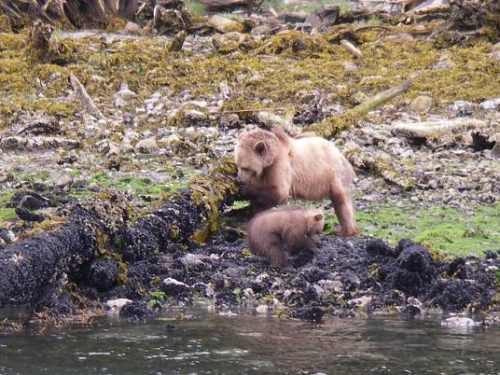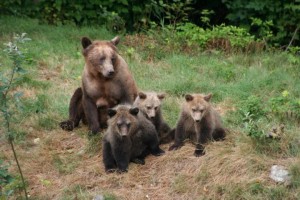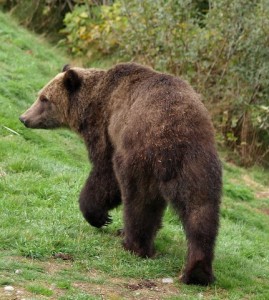
Just like that another season has come to an end. We are grateful for all the wonderful staff and the guests this season. It was an excellent season and we are already looking forward to next May.
One of the highlights of the season was all of the new cubs out. It was awesome to see so many new cubs of the year and that is great news for our bear populations moving forward. We had great spring viewing and this continued through summer. On our river trips we started to see salmon arriving in August and enjoyed some great shoulder season viewing. The fish at the viewing platforms were a little late showing up this year, but viewing during late September at the platforms was great and the estuary viewing remained strong throughout the season.
Out in the whale watching world it was another year that saw large numbers of resident Orca who remained in the area right into October. The Humpback viewing was also great with large numbers feeding in Blackfish Sound. It is so amazing to have these magnificent animals back in our waters in such numbers.
Over the winter and spring we will be doing some repairs and maintenance. We rebuilt the front deck last spring, utilising cedar cut on site. We will continue with some siding, rooms improvements and hopefully a floating sauna ready for the start of our season.
2026 is already looking like a very busy season for us. We only have limited high season availability so please book early to ensure we have space for your group.
Looking forward to seeing you next year
Angus Reid
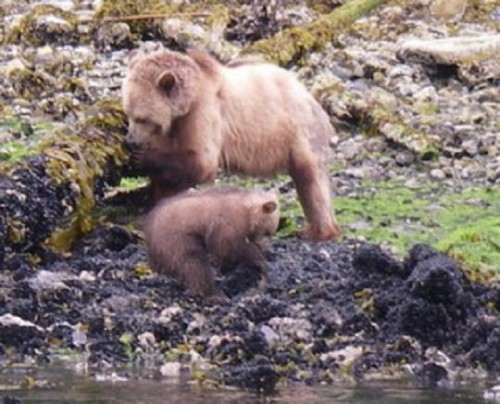
 Suddenly she stops and looks toward us. The problem is that she is less than 25 meters (yards) from where I am sitting on the bow of the skiff and I had stood up and started to move the skiff backward to give her more room to fish. Wrong move on my part. She froze looking at me so I sat down and she…
Suddenly she stops and looks toward us. The problem is that she is less than 25 meters (yards) from where I am sitting on the bow of the skiff and I had stood up and started to move the skiff backward to give her more room to fish. Wrong move on my part. She froze looking at me so I sat down and she… …
…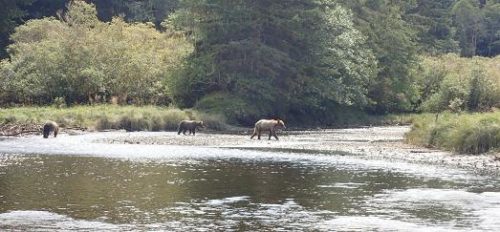 I remember this day well. Prior to August 25 all grizzly bear watching is in the Glendale River estuary. It was a slow day with no bears and I was pulling the skiff up river in low water. If one waits for the water to rise with the tide it is much easier but then the water is too deep for the grizzlies to trying and catch the salmon as they try to move up over the shallow gravel bars. We had just reached an area below a gravel bar when these grizzlies appeared….
I remember this day well. Prior to August 25 all grizzly bear watching is in the Glendale River estuary. It was a slow day with no bears and I was pulling the skiff up river in low water. If one waits for the water to rise with the tide it is much easier but then the water is too deep for the grizzlies to trying and catch the salmon as they try to move up over the shallow gravel bars. We had just reached an area below a gravel bar when these grizzlies appeared….